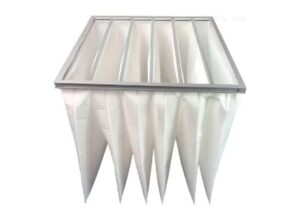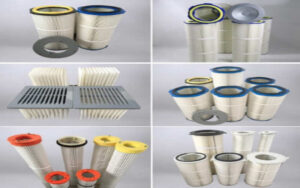Cleanrooms are highly specialized environments designed to maintain controlled levels of particulate contamination. Integral to their operation are various components, including air filtration systems, temperature and humidity controls, and structural elements like walls and ceilings. This guide provides an in-depth overview of cleanroom air filtration and related design considerations, highlighting the scientific principles and technologies that underpin their functionality.
The Role of Air Filtration in Cleanrooms
HEPA and ULPA Filters
Cleanroom air filtration systems primarily rely on HEPA (High-Efficiency Particulate Air) and ULPA (Ultra-Low Particulate Air) filters. These filters offer exceptional particulate capture efficiency:
- HEPA Filters: Capture 99.99% of particles as small as 0.3 microns.
- ULPA Filters: Capture 99.99% of particles as small as 0.128 microns.
Mechanism of Clean Air Delivery
The pleated design of these filters optimizes airflow, creating concentrated jet streams of clean air. This results in uniform columns of filtered air, effectively diluting contaminated air and maintaining the desired cleanliness level.
Environmental Controls
Temperature Regulation
Temperature control in cleanrooms is dictated by the requirements of the processes being conducted. When specific temperature constraints are absent, human comfort typically guides the selection, ensuring a balance between operational efficiency and worker well-being.
Humidity Management
Humidity levels in cleanrooms are typically maintained within the 40–60% range, with fluctuations restricted to ±5%. Strict humidity control prevents static electricity buildup, protects sensitive equipment, and ensures process consistency.

Structural Design of Cleanrooms
Walls
Cleanroom walls are constructed from non-shedding, easy-to-clean materials such as:
- Gypsum board with seamless coatings.
- Modular wall systems, which offer flexibility and tax advantages due to their classification as tangible property.
Floors
The ideal flooring options for cleanrooms, ranked by performance, include:
- Seamless poured systems.
- Seamless sheet vinyl.
- Epoxy coatings.
- Vinyl tiles.
These materials prevent dust penetration and are easy to maintain.
Ceilings
Ceilings in cleanrooms are typically positive pressure plenums. They feature grid systems that support HEPA filters, lighting, and panels. The grids are factory-gasketed or gel-sealed for stringent cleanliness requirements and can support loads of up to 12 pounds per square foot using 12-gauge wire.
Key Cleanroom Components
HEPA Filter Units
The filtration system is the cornerstone of cleanroom functionality. Typical 2’x4’ fan-powered HEPA units:
- Provide airflow capacities of 700–800 cubic feet per minute (cfm).
- Operate with energy-efficient motors, including modern watt-saving designs.
Lighting
Cleanroom lighting systems are sealed airtight to prevent particulate contamination. These systems produce heat, which must be accounted for in temperature control strategies. Standard illumination levels range from 70 to 100 foot candles.

Cleanroom Variables
Human Element
Humans are a major source of particulate contamination in cleanrooms. Even fully gowned workers shed skin particles, underscoring the importance of proper gowning and air filtration.
Gowning Procedures
Gowning minimizes particulate introduction and typically includes:
- Hair and beard covers.
- Shoe covers.
- Gloves and full-body coverings.
Gowning is performed in dedicated HEPA-filtered rooms to maintain cleanliness standards.
Testing and Certification
Once constructed, cleanrooms undergo rigorous testing and certification, often to ISO standards. These evaluations may be conducted annually by independent agencies to verify compliance.
Overview Table: Cleanroom Components and Functions
| Component | Key Functionality | Notable Features |
|---|---|---|
| HEPA/ULPA Filters | Airborne particulate capture | Efficiency: 99.99% for 0.3/0.128 microns. |
| Temperature Control | Regulates temperature for processes and comfort | Guided by process or human factors. |
| Humidity Control | Prevents static and ensures process stability | 40–60%, ±5% fluctuation. |
| Walls | Containment and cleanliness | Modular or seamless designs. |
| Floors | Dust-free, easy to maintain | Seamless systems preferred. |
| Ceilings | Positive pressure and support structure | Factory-sealed grids with HEPA filters. |
| Lighting | Maintains illumination without contamination | 70–100 foot candles, heat considerations. |
| Gowning | Reduces human particulate contamination | HEPA-filtered gowning rooms required. |

Conclusion
Cleanrooms represent the pinnacle of controlled environments, where air quality, temperature, humidity, and structural design converge to ensure precise and contamination-free operations. Engineers and designers must carefully evaluate all aspects of cleanroom construction, from filtration systems and environmental controls to human interaction and certification protocols.
By adhering to rigorous design principles and leveraging advanced technologies, cleanrooms can meet the highest standards of cleanliness and efficiency, supporting critical operations across industries.






